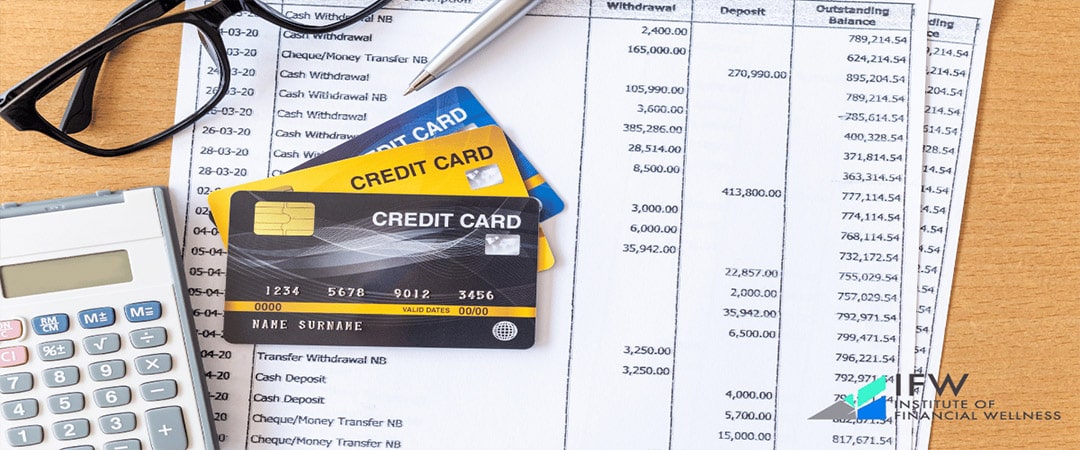“Year’s end is neither an end nor a beginning but a going on, with all the wisdom that experience can instill in us.” – Hal Borland
Seize control of your financial destiny and lock in a dream retirement! Knowledge is your secret weapon, arming you with everything needed to craft a retirement that’s not just secure but downright spectacular. Dive into the art of choosing the perfect retirement account, master the dance of maximizing Social Security rewards, and wield the information and tools that’ll make you retirement-ready and confident. Your future post-work life is waiting—let’s make it extraordinary!
Key Takeaways
- Understand retirement strategies and start early to maximize savings.
- Create a comprehensive plan, choose the right accounts, compare IRAs, and use employer matching for 401(k).
- Diversify investments and assess risk tolerance & advisor performance while exploring different options to ensure financial stability in retirement.
Understanding Retirement Strategies
Planning for your dream retirement? Picture this: a future filled with financial comfort and the freedom to live life on your terms. Crafting the perfect strategy is your ticket to that worry-free retirement you’ve always envisioned. It all starts with a roadmap tailored to your ideal retirement age and lifestyle.
Unlock the secrets to financial success by taking these game-changing steps: pinpoint when you want to retire, crunch the numbers to determine your ideal nest egg, and prioritize your savings over unnecessary expenses. Dive into the world of savvy financial choices by selecting the right accounts, like the powerhouse 401(k), and seal the deal by making shrewd investment choices that stand strong against the test of inflation. Your dream retirement awaits—let’s make it happen!
The Importance of Starting Early
Is it too early to start planning for retirement? It’s never too early! The recommended timeline for setting up a plan is five years before your intended retirement date. Many people make the mistake of starting their retirement planning later in life. Doing it at least five years before you intend to retire will enable you to take advantage of compound growth and make more informed decisions with regard to investments that suit each stage of life- from aggressive when younger to gradually moving towards a safer strategy as you get closer to retirement age. With this approach in mind, one’s financial security may be enhanced considerably by the time their golden days arrive!
Setting Realistic Goals
Creating a tailored retirement plan that meets both your lifestyle needs and financial situation is essential. Such an arrangement will tell you if you’re ready to retire and how much money can be withdrawn each year. When estimating the expenses associated with retiring, make sure to consider everyday costs like housing, food, and healthcare, as well as any large current expenditures that may not continue in retirement.
Supercharge your financial game plan for post-work bliss by connecting the dots between your anticipated income and expenses in retirement. Transform your golden years into a continuous stream of abundance—guaranteeing a wallet that stays as lively as your retirement lifestyle!
Choosing the Right Retirement Accounts

Retirement savings are an important way to secure your financial future. To make the most of them, it is wise to evaluate all available retirement account options, such as 401(k)s and IRAs, which provide access to a variety of investments like stocks, bonds, and mutual funds. Investing in one that provides employer matching may be advantageous for many individuals; other alternatives, such as Roth or Traditional IRAs, offer different tax benefits on withdrawals, too. Examining what accounts suit you best can help maximize the potential of any retirement plan chosen, so ensure you study each option thoroughly before deciding on how exactly to save effectively over time.
401(k) and Employer Matching
Employers often offer 401(k) retirement accounts, which allow workers to make pre-tax contributions from their salaries. These deposits reduce taxable income and enable tax-free growth of funds for the future. Maximizing these investments into a 401(k) plan, along with taking advantage of employer matching, can significantly improve your retirement savings. In 2023, the maximum contribution limit is set at $22,500. Those aged 50 or above are eligible for an additional catch-up amount of up to $7,500 as well [1].
Traditional IRA vs. Roth IRA
To make an informed decision about which type of IRA meets your retirement goals, it is essential to be aware of the various distinctions between Traditional and Roth IRAs. One key difference involves taxation: Traditional IRAs are deductible for tax purposes but then taxed on withdrawal while contributions made towards a Roth IRA are subject to income limits yet rewarded with tax-free withdrawals during retirement. Both forms have their own set-up earnings threshold, so it is important to thoroughly consider these facts when selecting the most suitable option for you.
Health Savings Account (HSA)
There is an easy peasy way to a financially fortified future with the ultimate retirement game-changer—the Health Savings Account (HSA)! Dive into the money-smart world where qualifying high-deductible health plans open doors to an abundance of benefits. Brace yourself for the 2024 contribution limits: $4,150 for solo adventurers and a whopping $8,300 for those embracing the family journey. And if you’re rocking the wisdom of 55 years, add an extra grand to your HSA fortune! [2]
Picture this: Tax reductions dancing in your financial favor as you stash away dedicated healthcare funds for your retirement voyage. It’s not just a plan; it’s a shield against the financial storms of later life. Explore the magic of retirement savings accounts and watch your future unfold with financial resilience!
Investment and Retirement Withdrawal Strategies

When planning for retirement, financial advisors recommend constructing a diversified investment portfolio that strikes an appropriate balance between risk tolerance and goals. The young are advised to invest more aggressively while as the date of retirement draws closer, their investments should take on a conservative form in order to reduce exposure to risks and achieve optimal returns.
The various withdrawal strategies, such as the 4% rule, fixed-dollar withdrawals, or fixed-percentage withdrawals, can all be tailored based on individual financial circumstances coupled with desired objectives when it comes time for retiring. Understanding how each works is vital to making sure one’s plan aligns well with overall expectations around fulfilling key needs during this period of life transitions from the working world to the full nonworking mode.
Diversifying Your Portfolio
Creating an investment portfolio with different asset classes allows you to reduce risk and get better returns [3]. This means spreading out your investments across stocks, bonds, mutual funds, and real estate. By using the principles of diversification correctly when developing a portfolio for retirement security can give you both protection from market volatility as well as growth opportunities over time.
Achieve a new level in your retirement by mixing and matching a dazzling array of assets! Imagine this: a life where you own not only stocks, bonds, gold, and mutual funds but also a dash of property magic, all working together to create a symphony of secure retirement planning outcomes. It’s not just diversification; it’s the art of finding that sweet spot between risk and reward in the grand tapestry of your long-term investment journey. Let the variety be your guide, weaving a future where risks are tamed and rewards are celebrated!
Balancing Risk Tolerance and Investment Goals
It all sounds very nice on paper, right? Now, what about risk? When planning your retirement strategy, it’s crucial to evaluate and balance both your risk tolerance with desired investment objectives. Personal characteristics such as age, portfolio size, and comfort level should all be taken into account when assessing what is an appropriate amount of risk for you. Your time horizon goals also play a role in determining the right approach since emotional intelligence and financial savvy can affect how much reward or potential loss one is willing to accept regarding their investments.
A well-balanced retirement plan that takes into consideration these factors will help ensure financial security while allowing you to live out the ideal lifestyle during this stage of life.
Exploring Different Investment Options
And since we know that you want your retirement savings to be successful, grab pen and paper and write this down: It’s essential for investors to research each option carefully in order to assess the risks and rewards associated before investing their money into any one vehicle. By taking all factors related to your unique financial situation along with specific retirement goals into account when developing your strategy, you can maximize your outcomes while also safeguarding yourself against future uncertainties. Remember that you can have a little bit of everything in your portfolio, from mutual funds to properties and bonds!
Maximizing Social Security Benefits

For those looking to retire, Social Security benefits are an invaluable source of income. The age at which people can fully receive these payments depends on when they were born. For example, the Social Security Administration (SSA) sets the full retirement age as 67 for anyone born after 1960. People who decide to delay claiming their entitlements may find that it increases their monthly income during retirement, and so couples need to consider each other’s benefits claims before making decisions in order to maximize this type of payout. To ensure a comfortable future life upon retiring, both parties should be informed about all aspects surrounding social security, such as laws and regulations governing it.
Determining the Best Age to Claim Benefits
Maximize your retirement game by playing the Social Security cards right. Tailor your benefit age to your financial needs, well-being, and the thrilling plot twist of life expectancy. The jackpot? Waiting until the golden age or beyond to claim those Social Security gems, unlocking a treasure trove of increased monthly revenue for your post-work adventure.
But hey, for the early birds itching to spread their wings from 62 onwards, there’s still a valid play in the game. It’s all about finding the perfect timing that syncs with your personal plotline. Your Social Security story – make it a blockbuster!
Coordinating Benefits with Your Spouse
Coordinating and planning with your spouse is a key factor for making the most of Social Security benefits. You can attain higher retirement income by holding off on payments from the higher-earning partner while simultaneously filing claims based on either person’s earning history – resulting in an augmented combined pension allowance.
It’s not just planning; it’s a symphony of foresight, teamwork, and resource mastery, laying the groundwork for a retirement lifestyle that screams comfort and kicks uncertainty to the curb. Let’s make the future not just secure but absolutely sensational for a comfortable retirement!
Managing Debt and Expenses

When planning for retirement, taking care of debt and expenses is a necessity. You can prepare yourself to have an enjoyable retired life by settling your debts before reaching that stage in life while also creating a budget to help you manage the costs as best as possible. This will allow more income flow for other activities, plus reduce any financial strain present when approaching this new period of one’s existence. Not only does setting up savings focused on pensioning need to be part of the finances management strategy, but having emergency funds available can safeguard plans against unforeseen situations or expenditures arising during this time as well [4].
Paying Down Debt Prior to Retirement
Live a stress-free retirement by achieving debt-free status and augmenting your disposable income [5]. Various approaches can help you achieve this goal, such as prioritizing debts with the highest interest rate, assessing spending habits in order to create a budget, and establishing an emergency fund for unexpected expenses. Also, unifying payments under one loan (consolidation) or maximizing any contributions made towards your pension plan.
This will ultimately bring numerous benefits upon reaching retirement age, not only giving more financial stability but also allowing more resources that could be used for leisure activities during those years.
By paying off your debt beforehand, you ensure that you have enough funds available when needed without having future obligations looming over you while trying to enjoy life post-retirement!
Creating a Retirement Budget
Did you know that you can accurately forecast future living expenses for attaining the comfortable retirement you desire? For your budget, ensure to factor in all necessary costs, including housing, healthcare, and taxes, as well as food items, emergency funds, and entertainment/traveling options. To make sure your money is not devalued over time due to inflation, wisely invest it into assets capable of yielding returns higher than what general inflation can offer; for this reason, consider having diverse investments at hand. With good planning, financial advice, and appropriately adapted budgets throughout life post-retirement, one might just be able to attain his or her desired lifestyle during old age!
Retirement Withdrawal Strategies

Formulating an effective retirement plan is based on grasping several different withdrawal strategies. Common tactics include the 4% rule, fixed-dollar withdrawals, fixed-percentage withdrawals, and the “buckets” strategy, all of which have their own benefits and drawbacks that need to be carefully considered before implementing a method tailored to your individual financial situation.
For high-income earners looking towards comfortable later life security, it may be beneficial to consider taking from investments via percentage rather than dollar basis. Those with more conservative funds might choose regular set sums as determined by The 4% Rule or buckets approach instead.
Choose your pre-retirement withdrawal adventure wisely! Dive into the decision-making realm considering both your current situation and the thrilling landscape of your future goals. It’s not just a choice; it’s a personalized journey where every twist and turn aligns with your unique path toward the coveted outcomes you desire. Your pre-retirement strategy—tailored for triumph!
The 4% Rule
Retirement savings can provide a comfortable retirement with the help of the 4% rule. It suggests that withdrawing 4% of your portfolio’s value in year one and then adjusting for inflation later on should give you an adequate income throughout all your retirement years without depleting funds too soon. To make sure it will cover everything necessary to maintain desired lifestyle levels, look at what an annual pre-retirement salary was and adjust accordingly when taking out money from accounts.
Fixed-Dollar vs. Fixed-Percentage Withdrawals
Determining the best approach for retirement requires examining fixed-dollar and fixed-percentage withdrawal strategies. Fixed-dollar withdrawals provide a regular source of income by taking out the same prearranged dollar amount over an established time frame. On the other hand, withdrawing a consistent percentage of your portfolio each year allows for more adaptability due to changes in your portfolio’s value since it adjusts accordingly. Mastering the art of weighing the pros and cons of each method is your ticket to pinpointing the perfect fit for your retirement planning needs. It’s not just about knowledge; it’s about crafting a strategy that aligns seamlessly with your unique financial journey. Uncover the nuances, make an informed decision, and let your retirement plan shine!
Customizing Your Withdrawal Strategy

Having a tailor-made approach to your retirement withdrawals is key for getting the most out of your income and achieving security in old age. When putting together this strategy, think about taxes, life expectancy, as well as any other sources of revenue you have access to, along with how diversified or not is your investment portfolio. These factors must be taken into account when selecting which withdrawal system would best fit with both financial circumstances and desired outcomes at retirement. Withdrawal plans that are tailored to each individual’s unique situation can guarantee an easier ride during senior years, along with peace of mind financially speaking!
Working with a Financial Advisor
Take your retirement planning to another level with the expertise of a certified financial planner! This professional can be a guide to navigate the intricate world of personal finance, offering insights into investment strategies, tax wizardry, and tailoring the perfect account for your financial needs. But here’s the key—before you embark on this financial journey, do your homework to find the advisor that vibes with your goals. It’s not just about initial choices; it’s about continually assessing and fine-tuning to ensure your financial ship sails smoothly toward those long-term success shores.
Trustworthy advisors are the architects of your financial dreams, crafting a future where retirement goals are not just met but exceeded—all while staying within the budgeting bounds. Regular check-ins? They’re the compass ensuring your progress aligns flawlessly with your aspirations. Let the financial adventure begin!
Finding the Right Advisor
What to look for when searching for the best financial advisor for retirement planning? There are various points that should be taken into account, such as their training and practice, investment approach, and range of services. Seek advice from people you trust – family members or experienced professionals – before selecting a suitable one.
Doing sufficient research is key when picking a professional who can help you reach satisfactory goals concerning your golden years.
Assessing Your Advisor’s Performance

After you have decided on a financial advisor to work with, staying in contact and conducting reviews regularly are key to ensuring that they are helping you reach your retirement goals. Evaluate their communication skills, investment strategy, as well as the level of trustworthiness they show toward keeping what’s best for you at heart.
This way, it will be possible to make sure their practices remain loyal to the set objectives when planning out for retirement while any required adjustments can easily be implemented without delays if needed.
The Institute of Financial Wellness
The Institute of Financial Wellness has a large collection of products, tools, and services to assist people in preparing for their retirement. We can help with budgeting tailored to an individual’s needs as well as provide advice on investments that will optimize savings specifically aimed towards retirement security. There are seminars and lessons available which focus solely on planning your future after you leave the workforce.
By taking advantage of what is offered by our institute, we equip individuals with all they need to know about retiring successfully and getting closer to achieving their goals when it comes time for them to enjoy life beyond work! The key words here remain: investment strategies, retirement planning, and retirement saving – giving insight into how one would go about finding financial stability at any stage in their lives post-work.
Full Summary
Retirement planning is a complex task that should be approached with mindful consideration of several elements, such as withdrawing funds strategically, investing prudently, having access to the right retirement accounts, and receiving maximum Social Security benefits. To ensure your plans are set for an enjoyable retirement life in later years, it’s best to start early on putting into place practical goals and making informed choices while working alongside a financial advisor. Taking control of your future finances is paramount when striving toward achieving those retirement aspirations.
Frequently Asked Questions
What is the best strategy to retire?
Retiring successfully involves planning and preparation. Aim to replace 70-90% of your pre-retirement income through savings, Social Security, and employer match contributions – by saving at least 15% of your pre-tax income each year and striving to save 10x your pre-retirement income by age 67.
Diversifying investments can help reduce risk and increase returns.
What is the $ 1,000-a-month rule for retirement?
To have an income of $1,000 each month during retirement, you need to set aside a total of $240,000 in savings. This is known as the “$1000 per month rule”.
What is the 4% rule in retirement?
In wealth management, the commonly accepted practice for retirees is known as the 4% spending rule. This is based on studies showing that if they start at this rate, their funds should be adequate to last them over a 30-year span without running out of money.
What are the top 5 retirement mistakes?
Retirees should be aware of the potential missteps that could impact their retirement, such as spending too much money, not taking inflation into consideration when planning finances, and miscalculating medical costs or Social Security benefits. It is also important to evaluate if you are prepared to retire at your chosen age.
What is the best way to withdraw money in retirement?
When in retirement, one should use the 4% rule to withdraw their money. This means you take out 4% of your savings for that first year and then an extra 2% each following year due to inflation. It is beneficial to go about withdrawing from tax-free accounts after using up taxable and tax-deferred ones as part of a carefully constructed withdrawal strategy that allows them access to more funds over time while managing taxes effectively. All these measures are designed with financial security during retirement being kept in mind.




